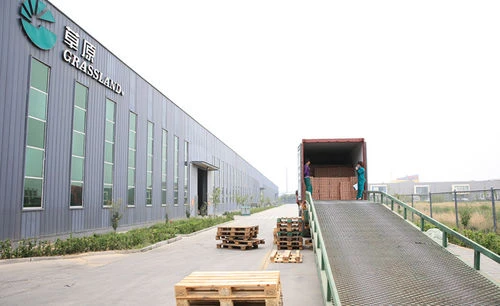Current location:125mm stone cutting disc >>Text
125mm stone cutting disc
disc for cutting stone77378People have read
IntroductionTypes of Abrasives in Grinding An Overview Grinding is a vital process in the manufacturing and engi...

Types of Abrasives in Grinding An Overview Grinding is a vital process in the manufacturing and engineering sectors, where materials are shaped, polished, and finished to achieve desired dimensions and surface qualities. The effectiveness of grinding largely depends on the types of abrasives used in the grinding wheels or tools. Abrasives are materials that are harder than the workpiece and are used to remove material through mechanical abrasion. This article explores the various types of abrasives commonly employed in grinding applications, highlighting their characteristics and uses. 1. Natural Abrasives Natural abrasives are derived from naturally occurring materials. Some of the most commonly used natural abrasives include - Diamond Known as one of the hardest materials on earth, natural diamond is exceptionally effective in grinding very hard materials, such as ceramics and metals. It is often used in precision grinding applications where a high-quality finish is required. - Emery Consisting primarily of corundum and used in a variety of forms, emery has been historically utilized in hand tools and grinding sticks. Today, it finds application in sanding and polishing processes. - Garnet This mineral is renowned for its high hardness and durability. Garnet abrasive is often used in waterjet cutting and for sandblasting applications due to its excellent performance. 2. Synthetic Abrasives Synthetic abrasives are engineered materials designed to have specific properties that can be tailored for different grinding applications. The most widely used synthetic abrasives include - Aluminum Oxide (Alumina) One of the most common abrasives in the industry, aluminum oxide is available in various forms—fused, calcined, and abrasive grains. It is known for its toughness and resistance to wear, making it suitable for grinding ferrous and non-ferrous metals . types of abrasives in grinding - Silicon Carbide This abrasive is harder than aluminum oxide and is typically used for grinding hard materials such as glass, ceramics, and stone. Silicon carbide abrasives are available in both green and black varieties, with the green being more suitable for harder materials. - Cubic Boron Nitride (CBN) CBN is the second hardest material after diamond and is particularly useful in grinding hardened steels and superalloys. CBN wheels are widely utilized in precision grinding applications due to their ability to retain sharpness and provide excellent surface finishes. - Zirconia Alumina This abrasive is a blend of zirconium oxide and aluminum oxide, offering a balance of strength and durability. Zirconia alumina is especially effective in high-impact applications, making it a preferred choice for grinding tougher metals. 3. Specialty Abrasives In addition to the traditional abrasives, there are also specialty abrasives designed for specific applications. These include - Ceramic Abrasives Often used in high-performance cutting and grinding applications, ceramic abrasives are engineered to provide a self-sharpening effect, which maintains their cutting ability over time. They are commonly used in industries where productivity and performance are critical. - Supra Abrasives These are hybrid abrasives that combine different abrasive materials to achieve specific performance characteristics. Supra abrasives can be tailored to meet the requirements of unique grinding applications, providing versatility and efficiency. Conclusion Choosing the right abrasive material is critical in any grinding operation, as it directly affects the efficiency, quality, and overall results of the process. Natural abrasives like diamond and garnet serve specialized roles, while synthetic abrasives such as aluminum oxide and CBN dominate most industrial applications due to their engineered properties. With advances in material science and technology, the development of specialty abrasives further enhances the versatility and performance of grinding operations. Understanding the different types of abrasives available allows manufacturers and engineers to optimize their processes, ensuring that they can meet the demands of increasingly complex and precise applications. As industries evolve, the role of abrasives in grinding will continue to be paramount, driving innovation and efficiency across sectors.
Tags:
Latest articles
Pencil-Shaped Grinder Wheels for Efficient Flap Wheel Polishing and Finishing
125mm stone cutting discUnderstanding Pencil Grinder Flap Wheels A Comprehensive Overview In the world of industrial tools a...
Read More
100mm Flap Wheel for Precision Grinding and Polishing Applications
125mm stone cutting discThe Versatility of 100mm Flap Wheels in Metalworking Flap wheels have become an indispensable tool i...
Read More
Green Stone Grinding Wheel for Efficient Sharpening and Polishing Techniques in Your Workshop
125mm stone cutting discThe Art and Craft of Green Stone Grinding Wheels Green stone grinding wheels have a rich history and...
Read More
Popular articles
- Effective Cutting Discs for Angle Grinders in Stone and Hard Materials
- grinder cutting wheel for metal
- Disco di taglio per metallo da 7 1_4 pollici con alta precisione e durata
- 3-Inch Cutting Disc for Precision and Durability in Metalworking Applications
- types of abrasives used in grinding
- Masonry Cutting Wheel Options for Angle Grinders You Should Consider
Latest articles
-
Can Flap Discs Effectively Sand Wood Surfaces for Better Finishing_
-
High-Performance 24 Grit Flap Disc for Efficient Grinding and Smoothing Applications
-
disc to cut aluminium
-
6 Inch Metal Cutting Disc for Precision Cutting and Durable Performance
-
300mmx3.5 × 25.4mm taglio segato 12 pollici metallo taglio lama
-
High-Performance 115mm Steel Cutting Disc for Precision Metalwork and Efficiency